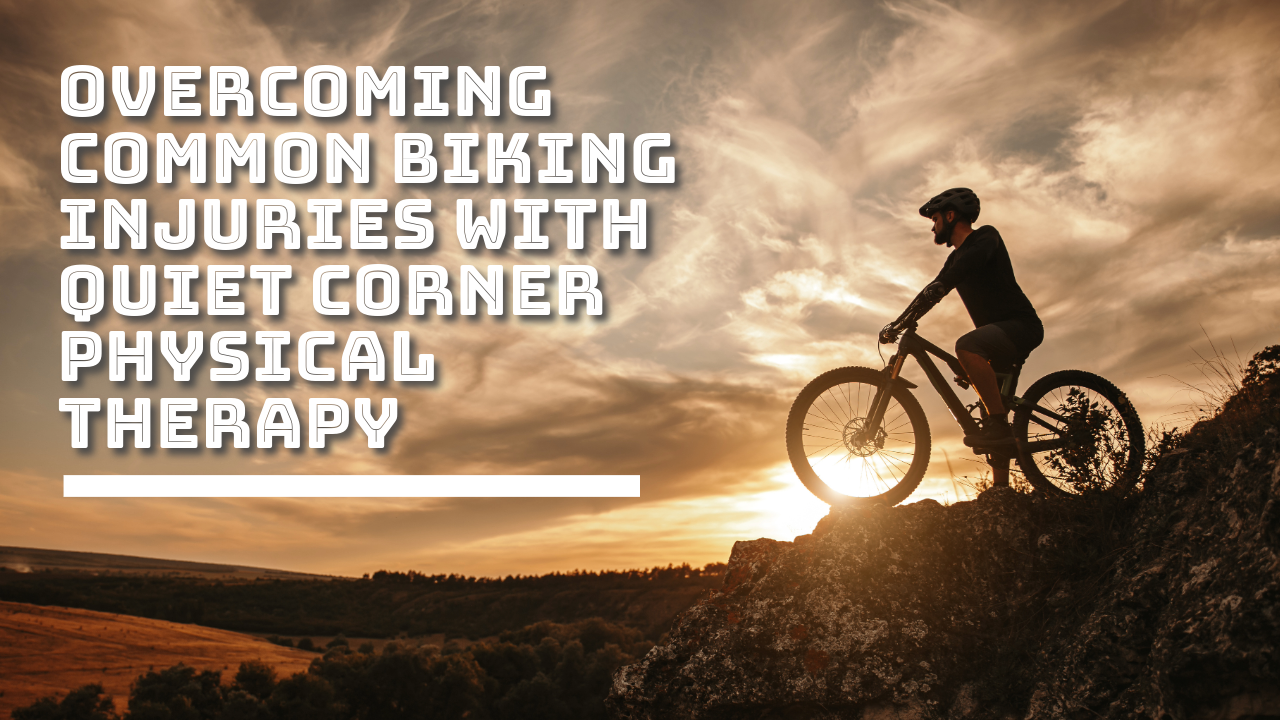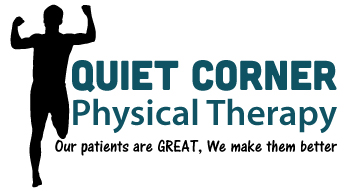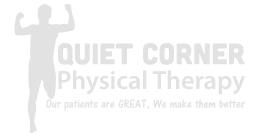
Overcoming Common Biking Injuries with Quiet Corner Physical Therapy
Biking is a fantastic way to stay active and enjoy the outdoors, but like any form of physical activity, it comes with the risk of injuries. Common biking injuries can range from minor scrapes and bruises to more serious issues like sprains, strains, and even fractures. However, with the right knowledge and approach, these injuries can be prevented, treated, and overcome. In this blog post, we will explore how Quiet Corner Physical Therapy can help you overcome common biking injuries and get back on the road to recovery.
Biking, while beneficial for health and fitness, exposes enthusiasts to a spectrum of injuries, influenced by the rider’s technique, the environment, and equipment ergonomics.
Among the prevalent concerns cyclists encounter are:
- Road rash, a common abrasion resulting from contact with the pavement, often seen after spills from the bike.
- Muscle strains present a frequent challenge, stemming from overexertion or incorrect cycling form, particularly affecting the leg and lower back muscles.
- Knee pain emerges as a significant issue, with patellofemoral pain syndrome and IT band syndrome being typical, often due to inadequate bike configuration or flawed pedaling mechanics.
- Wrist and hand injuries manifest as numbness, tingling, or discomfort, attributable to extended pressure on the handlebars, underscoring the importance of ergonomic positioning.
- Neck and shoulder pain, tied to suboptimal posture or bike setup, can lead to significant discomfort, highlighting the critical nature of proper alignment during rides.
Identifying these injuries is important for a safe and enjoyable biking experience. By understanding the diverse nature of biking injuries, cyclists can better prepare themselves to mitigate risks, emphasizing the significance of preemptive measures and correct practices in the sport.
Prevention Strategies for Biking Injuries
Ensuring your bike is the correct fit for your body is the foundation of injury prevention. An ergonomically adjusted bike minimizes stress on joints and muscles, reducing the risk of strains and pains. Key adjustments include seat height, handlebar position, and pedal alignment to ensure efficient and comfortable riding dynamics.
Adopting a proper riding technique is equally crucial. Maintaining a relaxed grip on the handlebars and keeping your knees aligned with your feet can prevent overuse injuries. Regularly changing hand positions and standing on the pedals during long rides can also help alleviate pressure on sensitive areas.
A good warm-up routine prepares your body for the physical demands of cycling. Incorporating dynamic stretches and starting your ride with a gentle pace can increase muscle flexibility and reduce the likelihood of strains. Cooling down post-ride with light stretching can aid in recovery and prevent stiffness.
Safety gear, while often overlooked, plays a significant role in injury prevention. Helmets protect against head injuries, while gloves can cushion falls and prevent abrasions and wrist injuries. Reflective clothing and lights are essential for visibility if riding during dawn, dusk, or nighttime, reducing the risk of collisions.
Lastly, a consistent training regimen that gradually increases in intensity allows your body to adapt to the rigors of cycling without overwhelming it. Balancing riding with strength training and flexibility exercises ensures overall musculoskeletal health, fortifying your body against the common injuries associated with biking.
Recognizing Symptoms and When to Seek Help
Key indicators such as consistent discomfort, noticeable swelling, a decrease in strength, or persistent numbness warrant immediate attention. These symptoms can manifest subtly, gradually intensifying to a point where they impede your ability to ride or perform daily activities comfortably.
The moment you detect these signs, it’s imperative to halt further aggravation by pausing your cycling routine and consulting with a healthcare professional or a physical therapist. This step is vital, as overlooking such symptoms can exacerbate the injury, potentially leading to a more severe condition that could sideline you for an extended period.
Engaging with a specialist provides an opportunity for a thorough evaluation, ensuring that any underlying issues are addressed promptly. A tailored approach to treatment, possibly encompassing rest, physical therapy, or more specialized interventions, will be developed based on your specific condition. This proactive stance not only facilitates a quicker return to cycling but also fortifies your body against potential future injuries, safeguarding your long-term health and well-being on and off the bike.
The Quiet Corner Physical Therapy Approach to Healing Biking Injuries
At Quiet Corner Physical Therapy, we tackle biking injuries with an innovative approach. Our seasoned therapists dive deep into understanding the root cause of your injury, offering a blend of cutting-edge techniques and traditional practices tailored to your specific rehabilitation needs.
We kickstart your healing journey with a thorough assessment to pinpoint the precise nature of your biking injury. Utilizing a strategic combination of manual therapy techniques, we aim to reduce pain and inflammation, enhancing your body’s natural healing process. Our personalized exercise programs are designed to rebuild strength, improve flexibility, and boost endurance, ensuring a robust recovery tailored to the demands of cycling.
Education plays an important role in our treatment strategy. We equip you with the knowledge to understand your injury better and guide you on how to avoid future occurrences. This includes advice on ergonomic bike adjustments, optimizing your riding technique, and incorporating preventive exercises into your routine.
Our therapists also incorporate functional training and simulation of biking activities into your rehabilitation plan. This gradual re-introduction to cycling activities ensures that your body is adequately prepared to handle the specific physical demands of biking, minimizing the risk of re-injury.
By choosing Quiet Corner Physical Therapy, you’re not just getting a treatment plan; you’re gaining a partnership. We’re dedicated to walking with you every step of the way on your path to recovery, ensuring you return to biking with confidence and resilience, all while keeping future injuries at bay. Give us a call today to learn more!


